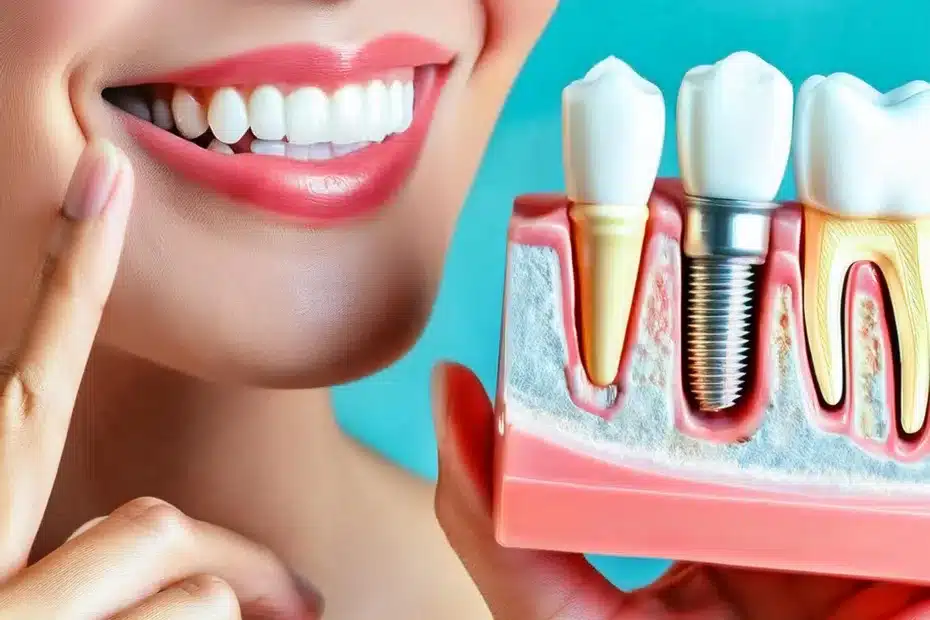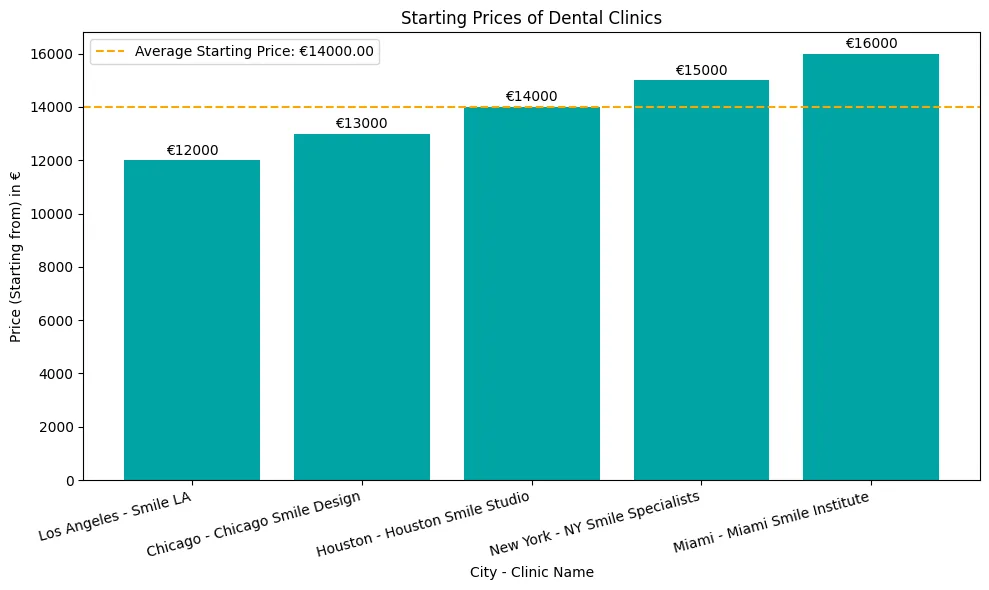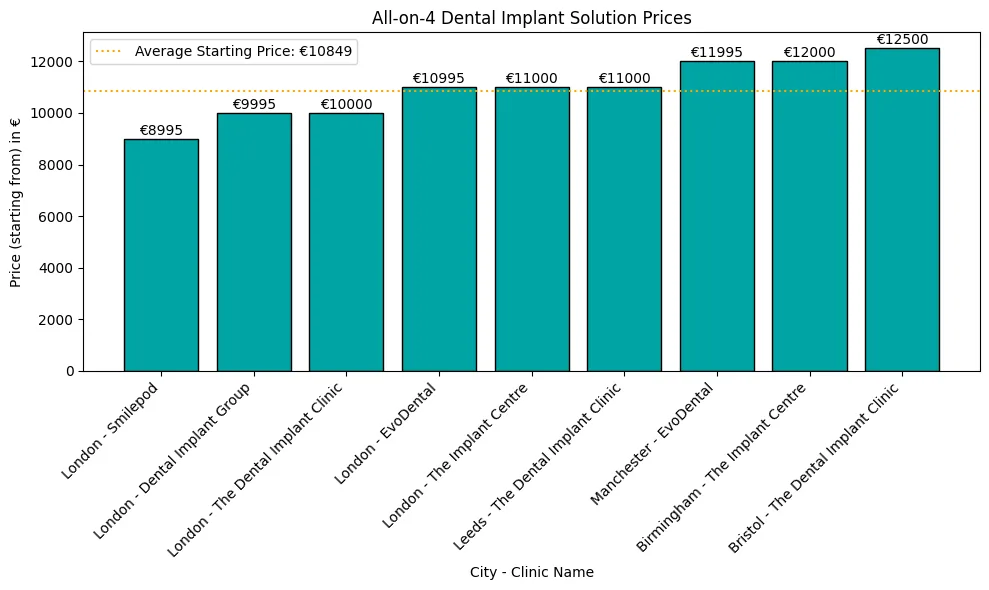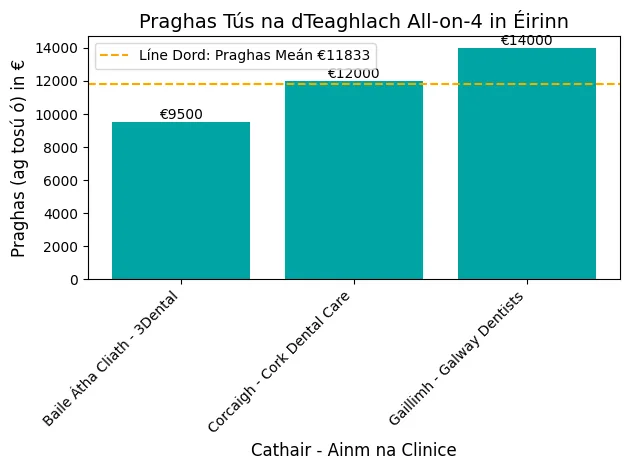Bei der Entscheidung für eine Restaurationsoption stellt sich für die Patienten die Frage, was für sie am besten ist: Implantat oder Krone.
Mit Blick auf Kosten, Invasivität und langfristige Ergebnisse ist es wichtig, die Unterschiede zwischen diesen beiden beliebten Lösungen zu kennen.
Was ist der Unterschied zwischen Implantaten und Kronen?
Zahnimplantate and crowns are two popular tooth restoration options, each with it’s own benefits and drawbacks. Implants are a permanent solution; they look and function like natural teeth, with a 90-95% success rate.Prevent bone loss, support the jaw, encourage new tissue growth.Expensive and surgical. Crowns are less invasive and cheaper but need to be replaced over time.
| Aspekt | Zahnimplantate | Kronen |
|---|---|---|
| Zweck und Verwendung | Ersetzen Sie den gesamten Zahn | Einen beschädigten Zahn abdecken |
| Bestandteile und Struktur | Wurzel und Krone aus Titan | Über einem natürlichen Zahn platziert |
| Behandlungsdauer und Verfahren | eine Operation und eine Heilungsphase erfordern | Weniger invasiv, in zwei Zahnarztbesuchen abgeschlossen |
| Invasivität und Erholung | erfordern einen chirurgischen Eingriff und eine Erholungszeit | Kein chirurgischer Eingriff, kürzere Erholungszeit |
Implantate vs. Kronen
Implantate: Pro und Kontra
Wenn es um Zahnersatz geht, ist die Debatte zwischen Zahnimplantaten und Zahnkronen sowie der Vergleich von Zahnimplantate vs. Brücken, lassen die Patienten oft im Unklaren darüber, welche Wahl die beste für ihre individuellen Bedürfnisse ist.
Implantate sind die beliebteste Wahl für diejenigen, die einen dauerhaften Zahnersatz wünschen. Hier sind die Vorteile:
Dauerhaft: Entwickelt, um bei richtiger Pflege ein Leben lang zu halten, stabil und langlebig.
Natürliches Aussehen und Gefühl: Sie sehen aus wie natürliche Zähne und fühlen sich auch so an - Ästhetik und Funktion.
Knochenkonservierung: Verhindert Knochenschwund durch Stimulierung des Kieferknochens, der für die Gesichtsstruktur wichtig ist (1).
Hohe Erfolgsquote90-95% Erfolgsquote (2)
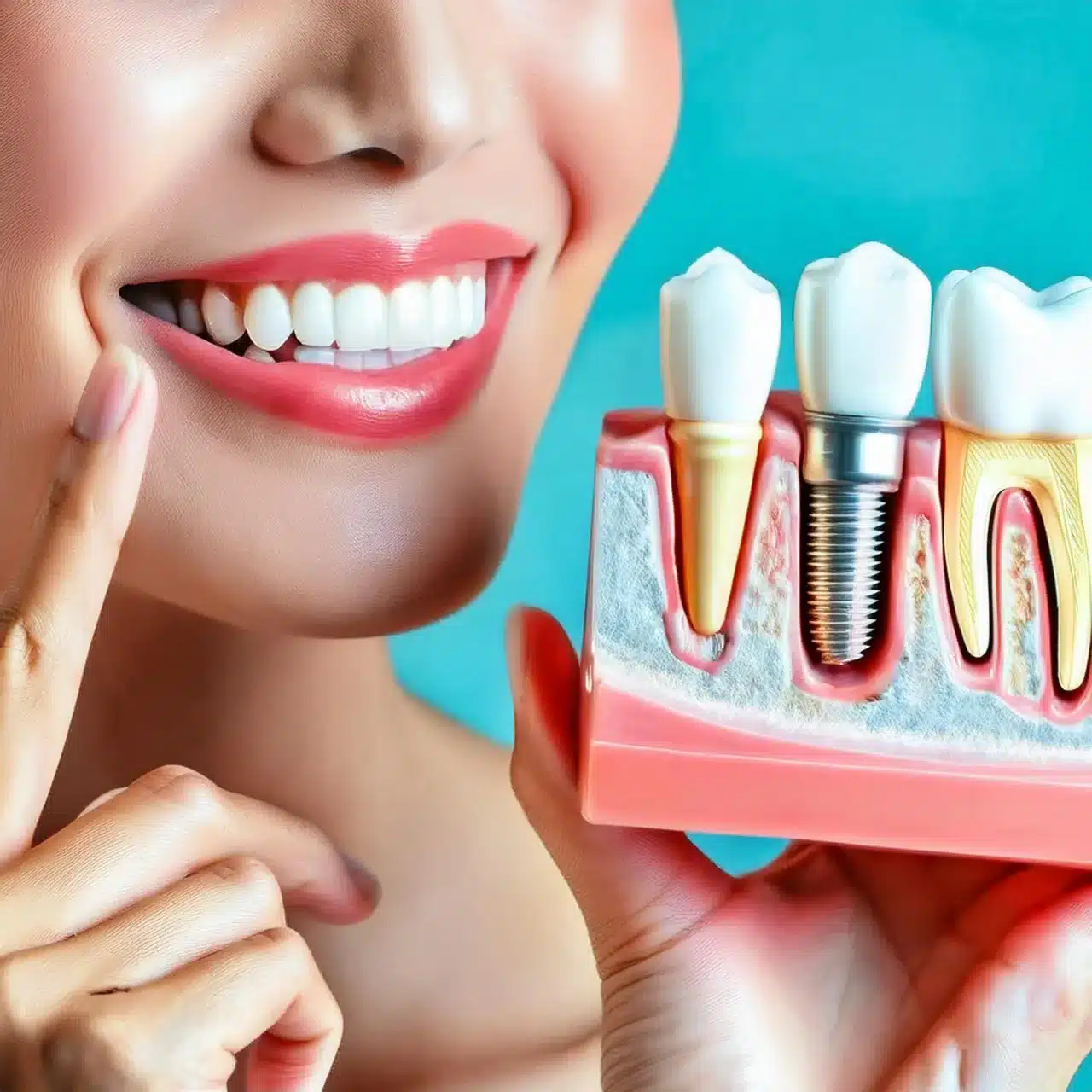
Aber hier sind die Nachteile:
Kosten: Implantate sind teurer als Kronen, 1.000 bis 3.000 € pro Implantat.
Chirurgisches Verfahren: Erfordert einen chirurgischen Eingriff, der invasiv sein kann und eine Heilungszeit erfordert.
Komplikationen: Risiko von Komplikationen wie Infektionen oder Implantatversagen, insbesondere bei bestimmten Gesundheitszuständen (3).
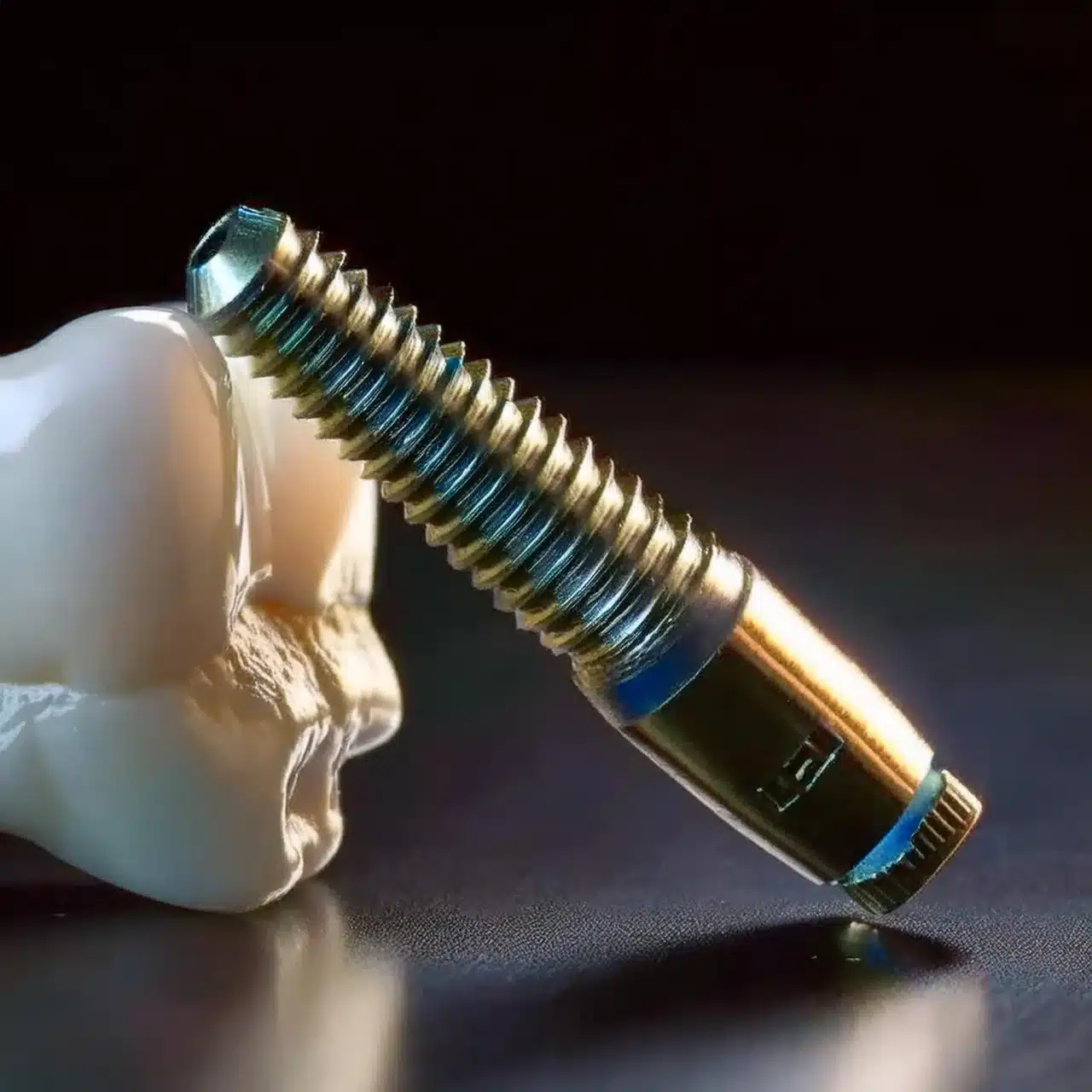
Kronen: Pro und Kontra
Kronen sind eine weitere Option für Menschen mit beschädigten Zähnen. Hier sind die Vorteile:
Weniger invasiv: Im Gegensatz zu Implantaten sind Kronen nicht chirurgisch und weniger invasiv.
Billiger: Kronen sind billiger als Implantate, 500 bis 1.500 €.
Schnell: Das Einsetzen einer Krone ist schnell erledigt - 2 Zahnarztbesuche.
Aber:
Dauerhaftigkeit: Kronen müssen je nach Material und Pflege alle 5-15 Jahre erneuert werden.
Zahnpräparation: Der natürliche Zahn muss abgefeilt werden, damit die Krone passt, was ihn mit der Zeit schwächen kann.
Verfall: Wenn Kronen nicht richtig eingesetzt werden, können sie Karies an den Rändern verursachen, wo die Krone auf den Zahn trifft.
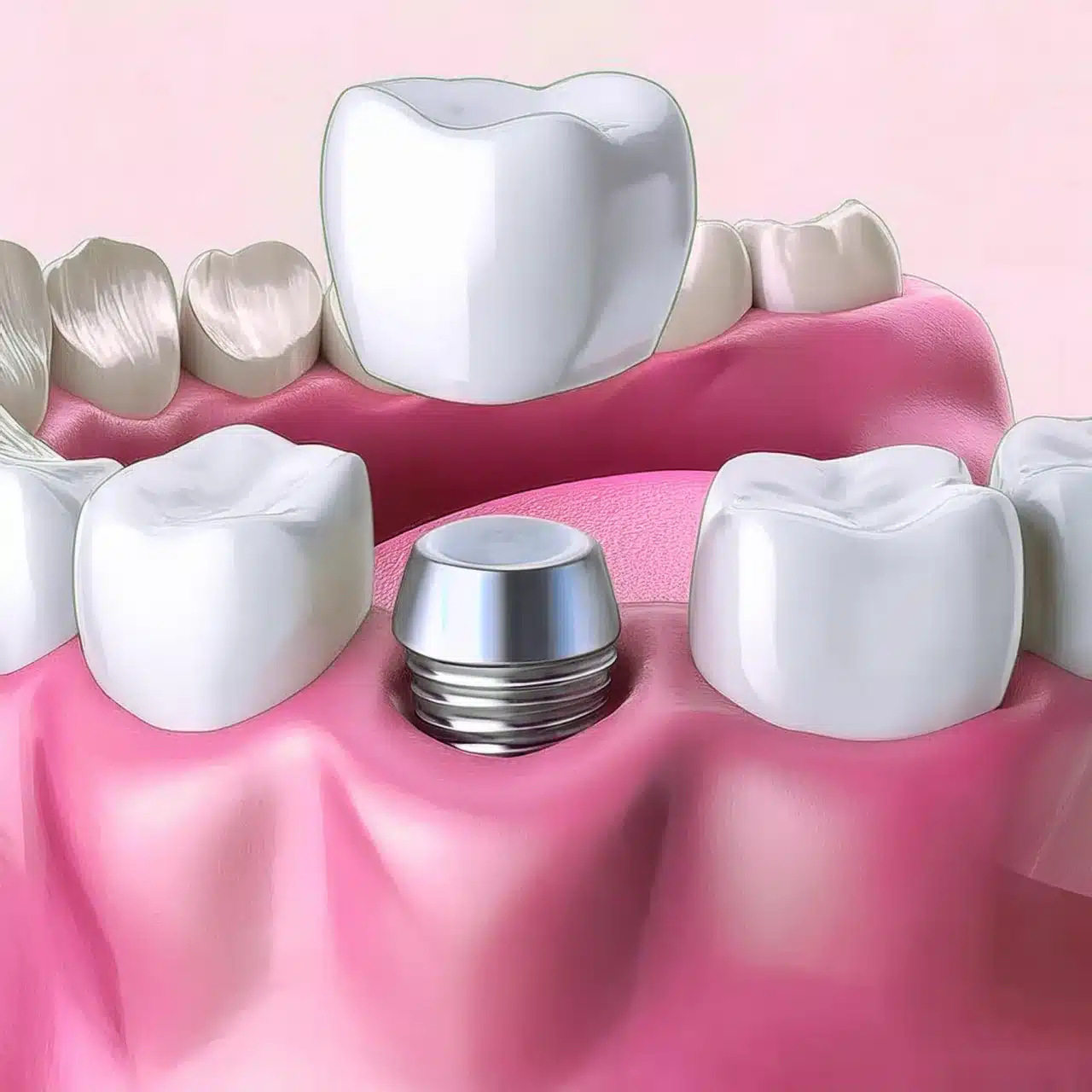
Alternativen zu Zahnimplantaten: Wann man sich für Zahnkronen entscheidet
Unter Berücksichtigung von Zahnimplantat-Alternativen:
Kosmetisch
Kronen sind die erste Wahl, wenn das Hauptaugenmerk auf der Kosmetik liegt.
Sie können verfärbte oder deformierte Zähne überdecken und ein einheitliches und schönes Aussehen verleihen.
Im Gegensatz zu Implantaten, die den gesamten Zahn ersetzen, bleibt bei Kronen die natürliche Zahnsubstanz erhalten, so dass sie ideal für diejenigen sind, die eine weniger invasive kosmetische Lösung wünschen.
In einer Studie zur Patientenzufriedenheit berichteten 85% der Patienten über eine große Verbesserung der Ästhetik ihres Lächelns nach der Versorgung mit Kronen (4).
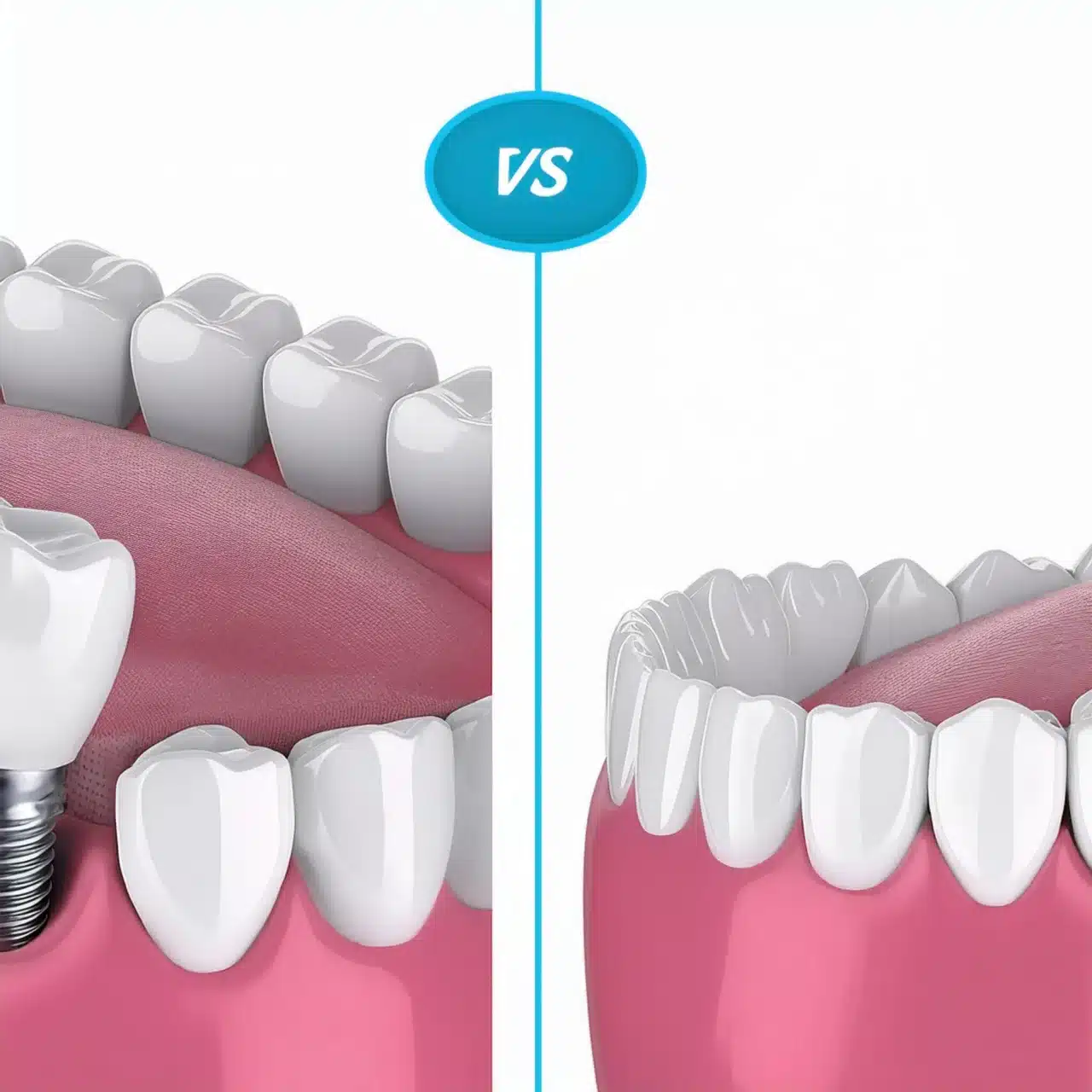
Partielle Zahnschäden
Bei partiellen Zahnschäden sind Kronen die Lösung.
Sie können die Funktion und das Aussehen eines abgebrochenen oder gesprungenen Zahns ohne Extraktion wiederherstellen.
Kronen sind gut für Zähne geeignet, die eine Wurzelbehandlung hinter sich haben, und verleihen ihnen Festigkeit und Schutz.
Laut einer klinischen Studie haben Kronen in 92% der Fälle von Teilzahnschäden die Funktion wiederhergestellt, was beweist, dass sie natürliche Zähne retten können (3).
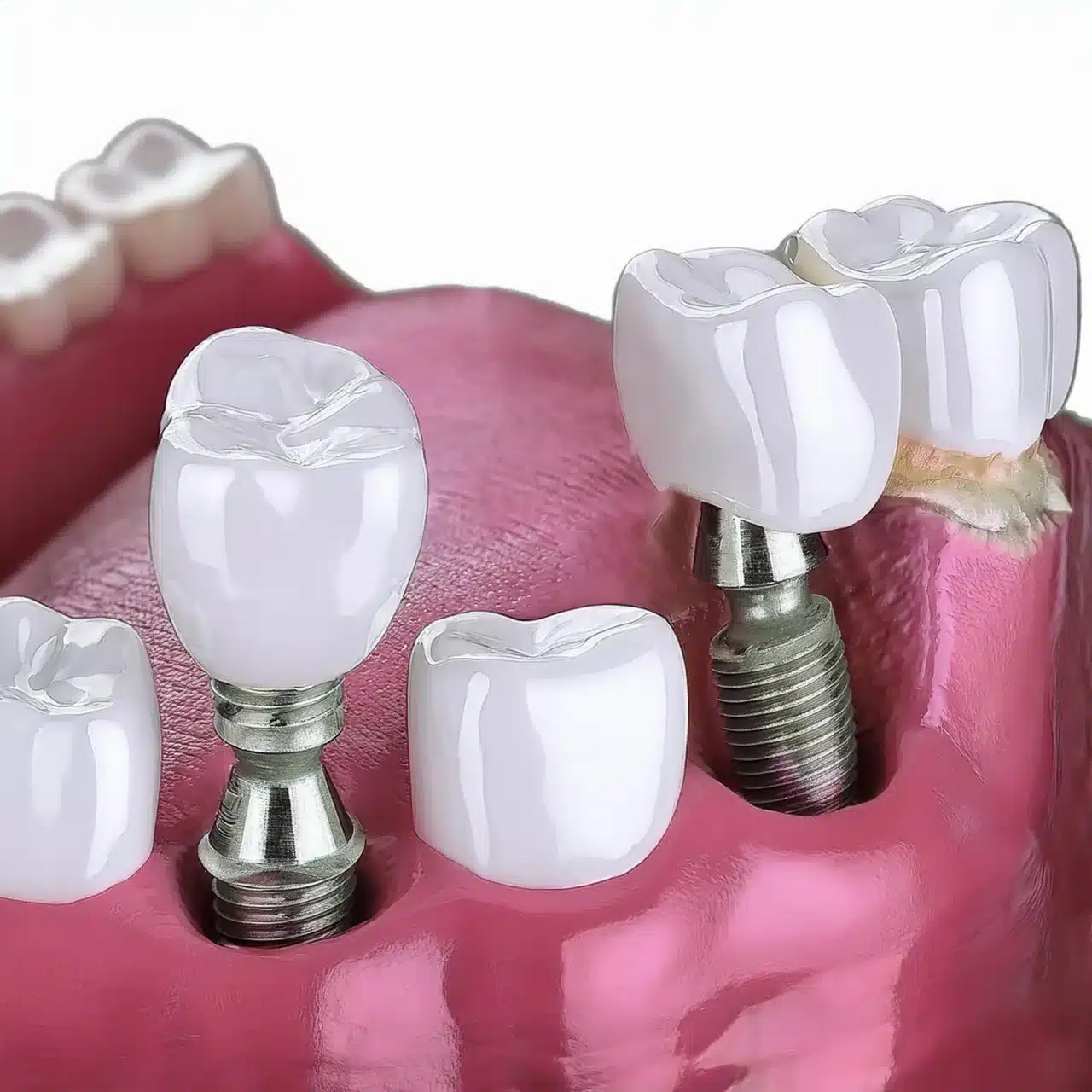
Implantat vs. Kronen
Anfängliche Kosten
Betrachtet man die anfänglichen Kosten, so sind Kronen die günstigere Option.
Die Kosten für eine Zahnkrone belaufen sich je nach Material und Komplexität des Eingriffs auf 500 bis 1.500 Euro.
Implantate sind viel teurer, 1.000 bis 3.000 € pro Implantat.
Dies ist auf das chirurgische Verfahren und das verwendete Material, Titan für den Implantatpfosten, zurückzuführen(1).
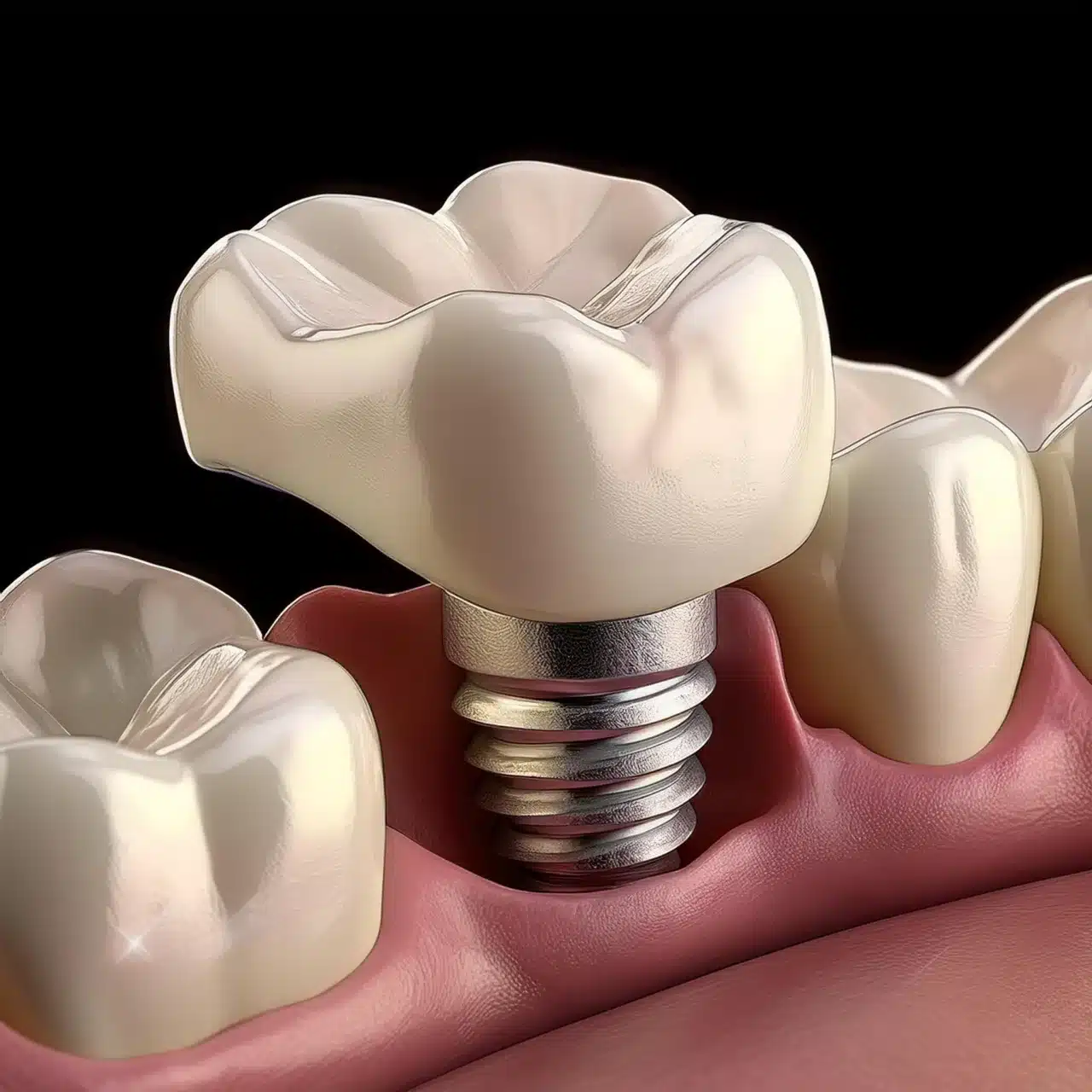
Langfristige Kosten-Wirksamkeit
Obwohl die Anschaffungskosten für Implantate höher sind, sind sie auf lange Sicht kostengünstiger.
Implantate sind so konzipiert, dass sie bei richtiger Pflege ein Leben lang halten und nicht häufig ausgetauscht werden müssen.
In einer Studie über die Langlebigkeit von Zahnersatz hatten Implantate nach 10 Jahren eine Überlebensrate von über 90%; Kronen müssen alle 5-15 Jahre ersetzt werden (2).
Diese Langlebigkeit kann langfristig zu niedrigeren Gesamtkosten führen, insbesondere wenn Sie mehrere Kronen ersetzen müssen.
Für diejenigen, die eine langfristige Lösung anstreben, kann die Investition in Implantate trotz der höheren Anfangskosten ein besseres Preis-Leistungs-Verhältnis bieten.
| Aspekt | Zahnimplantate | Kronen |
|---|---|---|
| Anfängliche Kosten | 1.000 € bis 3.000 € pro Implantat | 500 € bis 1.500 € |
| Langfristige Kosten-Wirksamkeit | Konzipiert für eine lange Lebensdauer, wodurch sich der Bedarf an Ersatzteilen verringert | Muss möglicherweise alle 5 bis 15 Jahre ersetzt werden |
Schlussfolgerung & Key-Takeaways
Wichtige Erkenntnisse:
Implantate sind eine dauerhafte Lösung mit einer hohen Erfolgsquote, ohne Knochenverlust, und stützen den Kiefer.
Kronen sind weniger invasiv und billiger, müssen aber mit der Zeit ersetzt werden.
Implantate sind teurer und erfordern einen chirurgischen Eingriff; Kronen sind weniger invasiv.
Die Entscheidung zwischen Implantaten und Kronen hängt von den individuellen Bedürfnissen, den Kosten, der Invasivität und der langfristigen Wirksamkeit ab.
Schlussfolgerung:
Zusammenfassend lässt sich sagen, dass die Kenntnis des Unterschieds zwischen Implantaten und Kronen der Schlüssel zu einer fundierten Entscheidung für eine Zahnrestauration ist.
Wenn die Patienten die Vor- und Nachteile der einzelnen Optionen kennen, können sie sich für die beste Lösung für ihre Bedürfnisse entscheiden und eine optimale Mundgesundheit und Ästhetik erreichen.
FAQs
Referenzen
Cho JM, Jo H, Jo HG, et al. Langfristige Steroidtherapie und Denosumab-Behandlung, die zu einer medikamentös bedingten periimplantären Osteonekrose des Kiefers führen: ein Fallbericht. J Dent Implant Res. 2024;43(3):27-32.
Artikel: Langfristige Steroidtherapie und Denosumab-Behandlung führen zu einer medikamentös bedingten periimplantären Osteonekrose des Kiefers: ein FallberichtLee HS, Kim TW, Moon IS, et al. A retrospective study on the factors associated with marginal bone loss of short implants placed in posterior regions. J Dent Implant Res. 2023;42(3):46-52.
Artikel: Eine retrospektive Studie über die Faktoren, die mit dem marginalen Knochenverlust bei kurzen Implantaten im Seitenzahnbereich in Verbindung stehenKang TG, Shin YJ, Park KS, et al. Sofortige Implantation mit Enukleation der Zyste des Ductus nasopalatinae: Ein Fallbericht. J Dent Implant Res. 2023;42(4):53-59.
Artikel: Sofortige Implantation mit Enukleation der Zyste des Ductus nasopalatinae: Ein FallberichtPark IS, Kim YK, Kim JC, et al. Sofortimplantation über einen minimalinvasiven Ansatz bei aggressiver Parodontitis im posterioren Oberkiefer unter Verwendung des MagiCore-Implantats - 3 Fallberichte. J Dent Implant Res. 2023;42(3):35-45.
Artikel: Sofortimplantation über einen minimalinvasiven Zugang bei aggressiver Parodontitis im hinteren Oberkiefer unter Verwendung des MagiCore-Implantats - 3 Fallberichte

